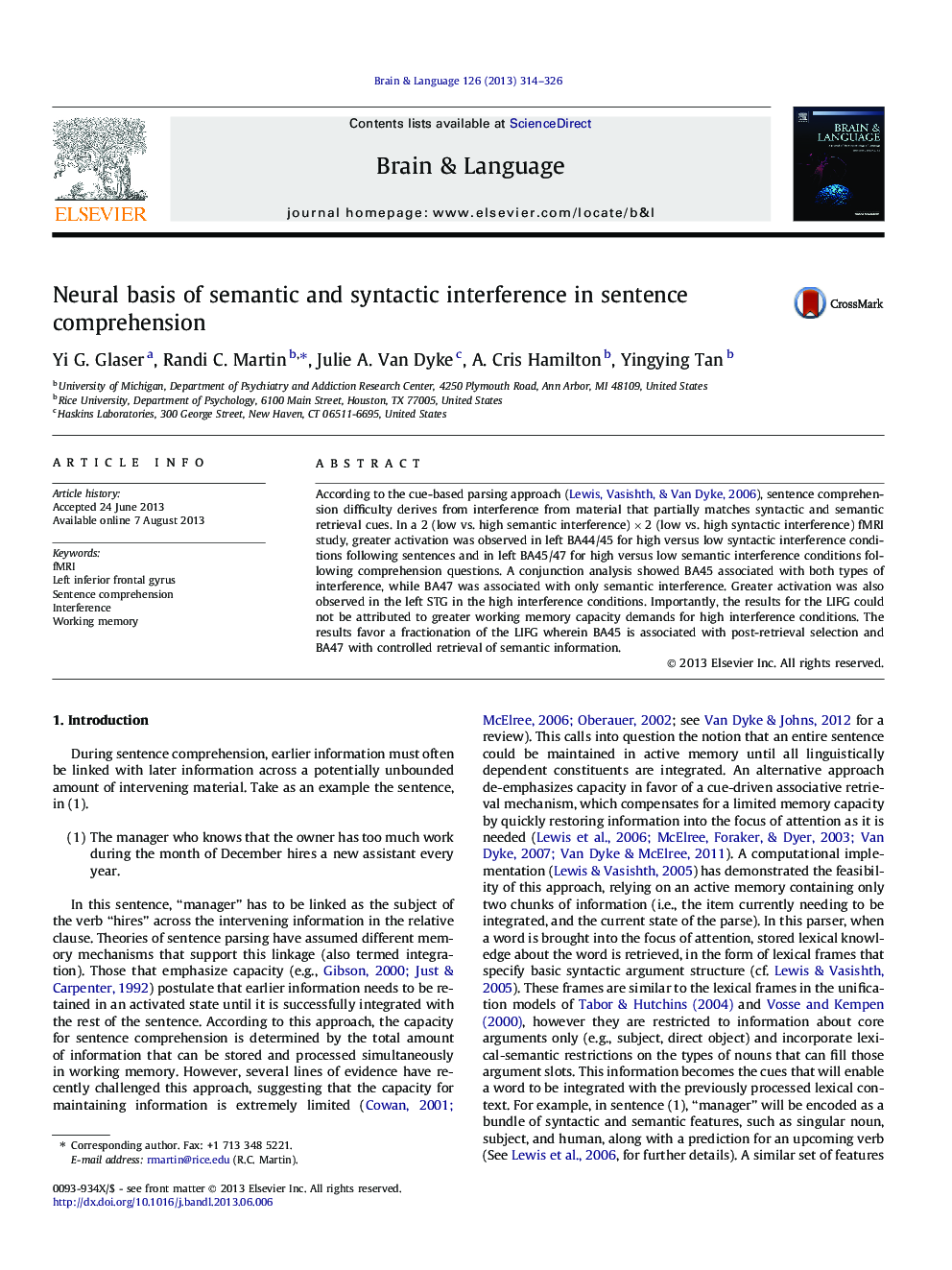| Article ID | Journal | Published Year | Pages | File Type |
|---|---|---|---|---|
| 925337 | Brain and Language | 2013 | 13 Pages |
•The neural basis of interference resolution in sentence comprehension was examined.•Syntactic and semantic interference were observed, but with a different time course.•BA45 and the superior temporal gyrus were sensitive to both types of interference.•A region in BA47 responded specifically to semantic interference resolution.•These interference effects could not be due to differential working memory demands.
According to the cue-based parsing approach (Lewis, Vasishth, & Van Dyke, 2006), sentence comprehension difficulty derives from interference from material that partially matches syntactic and semantic retrieval cues. In a 2 (low vs. high semantic interference) × 2 (low vs. high syntactic interference) fMRI study, greater activation was observed in left BA44/45 for high versus low syntactic interference conditions following sentences and in left BA45/47 for high versus low semantic interference conditions following comprehension questions. A conjunction analysis showed BA45 associated with both types of interference, while BA47 was associated with only semantic interference. Greater activation was also observed in the left STG in the high interference conditions. Importantly, the results for the LIFG could not be attributed to greater working memory capacity demands for high interference conditions. The results favor a fractionation of the LIFG wherein BA45 is associated with post-retrieval selection and BA47 with controlled retrieval of semantic information.
